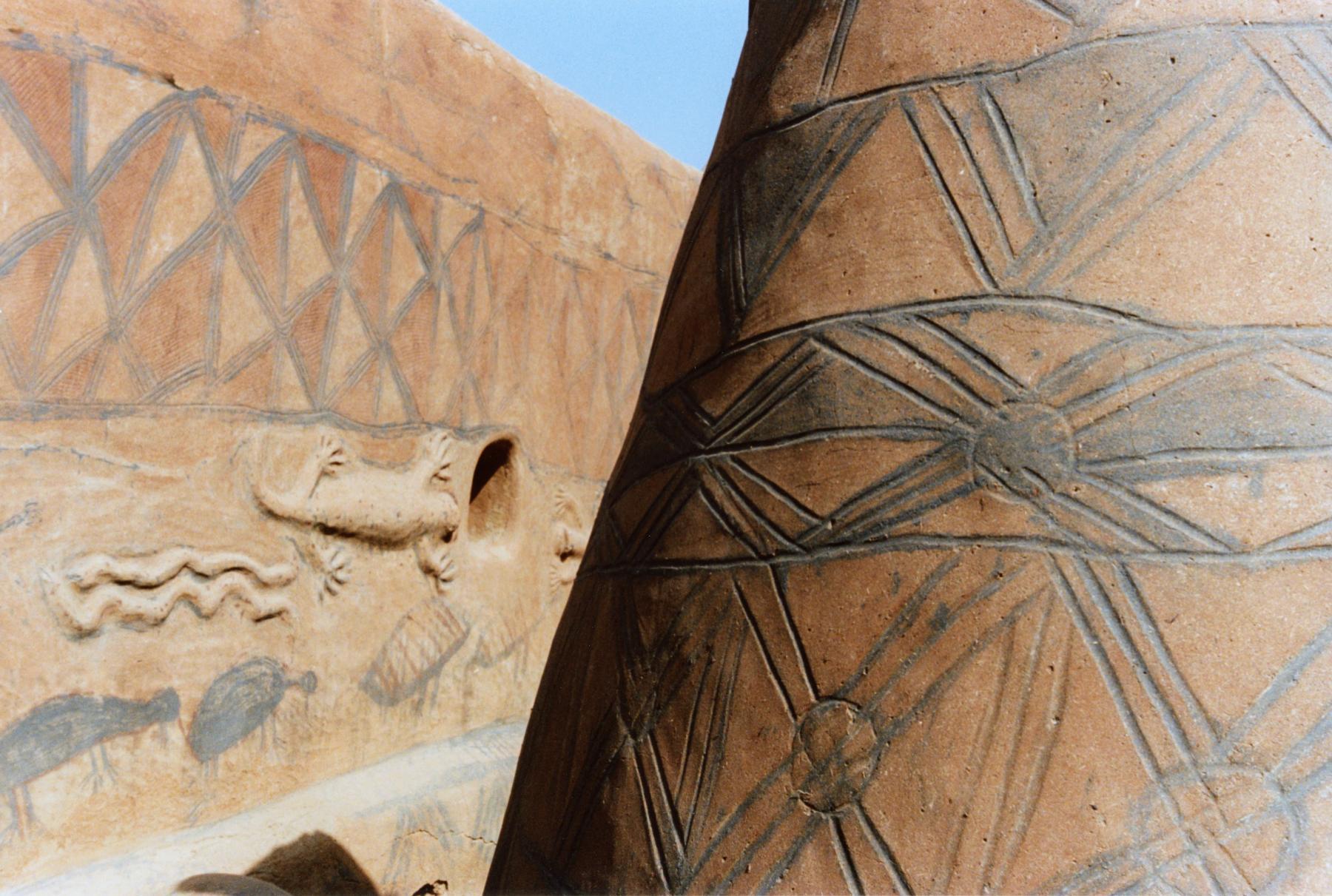Unesco World Heritage Committee 2024 accepts the Royal Court of Tiébélé for Inscription
2024 Jul 29

[Photo: The Royal Court of Tiébélé, a photograph from the book "African Vibrations" by Mr Alfredo Cuomo © 2006 Cuomo Foundation]
During the 46th annual session of the UNESCO World Heritage Committee held in New Delhi, India from July 21 to 31, 2024, Burkina Faso's Royal Court of Tiébélé was inscribed to the UNESCO World Heritage List as a cultural site.
The Cuomo Foundation, through its long-standing partnership with the Dizénidani Association, has actively supported its nomination for inclusion since 2014.
The World Heritage Committee is one of the two bodies that govern the UNESCO 1972 Convention for the Protection of the World's Cultural and Natural Heritage. It was formed by merging two separate movements: one focused on preserving cultural sites and the other on conserving nature. The Committee is made up of representatives from 21 states, elected from the 195 states parties to the Convention.
The Committee is responsible for implementing the Convention, evaluating new proposals for inclusion on the World Heritage List, and assessing the conservation status of already listed sites based on analyses from UNESCO's advisory bodies and Secretariat. It meets once a year for an ordinary session.
The Royal Court of Tiébélé, which represents the longstanding culture of the Kasena people, now officially joins three other UNESCO recognized Burkinabe monuments - the Loropéni ruins, the ancient iron metallurgy sites, and the W-Arly-Pendjari complex - on the World Heritage List, which to date includes 1,223 properties worldwide: 952 cultural, 231 natural, and 40 mixed.
The Cuomo Foundation, through its long-standing partnership with the Dizénidani Association, has actively supported its nomination for inclusion since 2014.
The Dizénidani Association, led by Kassimir Nassara, himself a resident of the Royal Court, organizes the annual DORA decorative mural event to maintain traditions and restore the dwellings of the court. This initiative, supported by the Cuomo Foundation, has been maintaining the site for a decade, training future generations to preserve their heritage.
Today, there are traces of the Kasena people's extensive cultural heritage everywhere in the Royal Court, including architecture, ornamentation, social structure, and religious beliefs. Furthermore, because the site remains in use and is continually evolving, there are preservation concerns as well as reasons for interest. The Cuomo Foundation hopes that the esteemed designation by UNESCO will promote attention and assist in comprehending, protecting and preserving this priceless heritage.
UNESCO description of Royal Court of Tiébélé
The property is an earthen architectural complex established since the 16th century that bears testimony to the social organization and cultural values of the Kasena people. Enclosed by a protective compound wall, the Royal Court consists of a set of buildings arranged in distinct concessions separated by walls and passageways leading to ceremonial and gathering places outside the compound. Built by the men of the Royal Court, the huts are then adorned with decorations of symbolic significance by the women, who are the sole guardians of this knowledge and ensure this tradition is kept alive.
https://whc.unesco.org/en/list/1713/
A Grand Piano Gift for the Nice Opera
2024 Dec 12


 Français
Français


